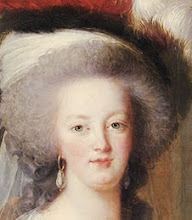Thursday, October 25, 2012
Review: The Resurrection of the Romanovs by Greg King and Penny Wilson
Anna Anderson. To say her name--even today--summons thousands of dissenting opinions about what may be one of the most controversial royal mysteries in recent memory. Was she the Grand Duchess Anastasia, miraculously saved from a horrible fate at the hands of her family's executioners? Or was she a pretender, complicit in a hoax that captivated millions for the better part of the 20th century? All evidence points to one conclusion: Anna Anderson was not Anastasia. DNA testing in the 1990s on the discovered remains of the Romanov family and on multiple samples of Anderson's DNA concluded that she was not related to the Romanov family. Who, then, was she? Why did she claim to be Anastasia? And why would people, especially those who had some connection to the real grand duchess, believe her story? How did a lie which had no factual basis become an inescapable legend firmly rooted in the minds of the public?
In The Resurrection of the Romanovs: Anastasia, Anna Anderson and the World's Greatest Royal Mystery, Greg King and Penny Wilson tackle the answers to these questions about the woman who became known as Anna Anderson and her claim to be the Grand Duchess Anastasia with meticulous detail. King and Wilson begin by recounting the short life of the real Anastasia, who was born into a world of unimaginable privilege and ended her life in captivity with her parents, siblings, and a handful of loyal servants. In the aftermath of the Romanov execution, uncertainty was born. There was no official resolution to the fate of the family. Rumors of survival and execution traveled around the world, from mainstay newspaper publications to the gossip of former Russian courtiers in Berlin apartments.
It was in this atmosphere of uncertainty that a young woman, who had been hospitalized after a suicide attempt in Berlin, claimed that she was the Grand Duchess Anastasia. But her claim, which may have gone unnoticed as a mere wild statement by someone with a mental instability had circumstances gone otherwise, took on a life of its own--soon, she was living with courtiers, being discussed by newspapers around the world, being addressed as Her Imperial Highness, and living in European castles. She traveled around Europe, to America, to Germany, and back again. Her story was made into books, plays, and feature films during her lifetime. She was supported by some, reviled by others, and pitied by a few. This woman would be known by many names throughout her life: Fraulein 'Unknown,' Fraulein Annie, Frau Anastasia Tchaikovsky, Anna Anderson, and Anastasia Manahan. The name she was born with was, in the end, Franziska Schanzkowska.
Throughout their dissection of the story of 'Anna Anderson,' King and Wilson are quick to debunk many of the myths which made her story so enticing and so believable--not only to readers following the story in books and newspapers, but even to some who knew Anastasia or her family. Much of the information released to the public about Anderson and her claim was, at best, edited. Published evidence of Anderson's claim was often revised by one of her most prolific supporters, Harriet Ellen Siderowna von Rathlef-Keilmann, who removed details which might produce suspicion about Anderson and added details which supported her claim. Her book about Anderson was widely printed, while books which debunked the myth were left to go out of print, or left untranslated.
King and Wilson cover ample ground with Anderson's claim and her long life, which ended at the age of 87 in the 1980s. From there, they discuss the discovery of the remains of the Romanovs in 1990s and the decision to test Anderson's DNA against the remains of the Romanov family. And finally, the discovery that she was Franziska Schanzkowska is revealed in the final chapters, where her real life--and the reason why her identity was obscured--are finally revealed.
In many ways, The Resurrection of the Romanovs is not just the story of Anna Anderson's claim to be Anastasia. It is a resurrection of the real Anna Anderson, the real Franziska Schanzkowska, who had been lost to history through a hoax of her own making. I highly recommend this book to anyone interested in Romanov history or royal history--it is essential reading for anyone interested in Anastasia, for her story, for better or worse, would not have reached so many were it not for this imposter and her claim. I will end with this apt quote: "It is the greatest irony in Franziska’s tale: the farm girl from an obscure German village turned the real grand duchess, whose name appropriately meant “Resurrection,” into a modern legend."
Subscribe to:
Post Comments (Atom)
Search This Blog
Blog Archive
About Inviting History
Inviting History is a book and history blog dedicated to especially interesting, overlooked or niche areas of history, as well as their interpretation in both non-fiction and literature.
Inviting History Book Reviews
Updated Tuesdays, Thursdays and Sundays with book reviews, historical posts, and more!
**Inviting History Has Relaunched as of April 2019!**
Inviting History Book Reviews
About Me

- Anna Gibson
- (Formerly Anna Amber)
"History is scholarship. It is also art, and it is literature."
I am a history loving writer who enjoys reading and blogging in my spare time. I currently run three blogs: Reading Treasure, a blog dedicated to books and more about Marie Antoinette and 18th century France; Treasure for Your Pleasure, a Tumblr microblog dedicated to Marie Antoinette and her world; and my newest blog, Inviting History, a book blog dedicated to unique and overlooked history books.


No comments:
Post a Comment